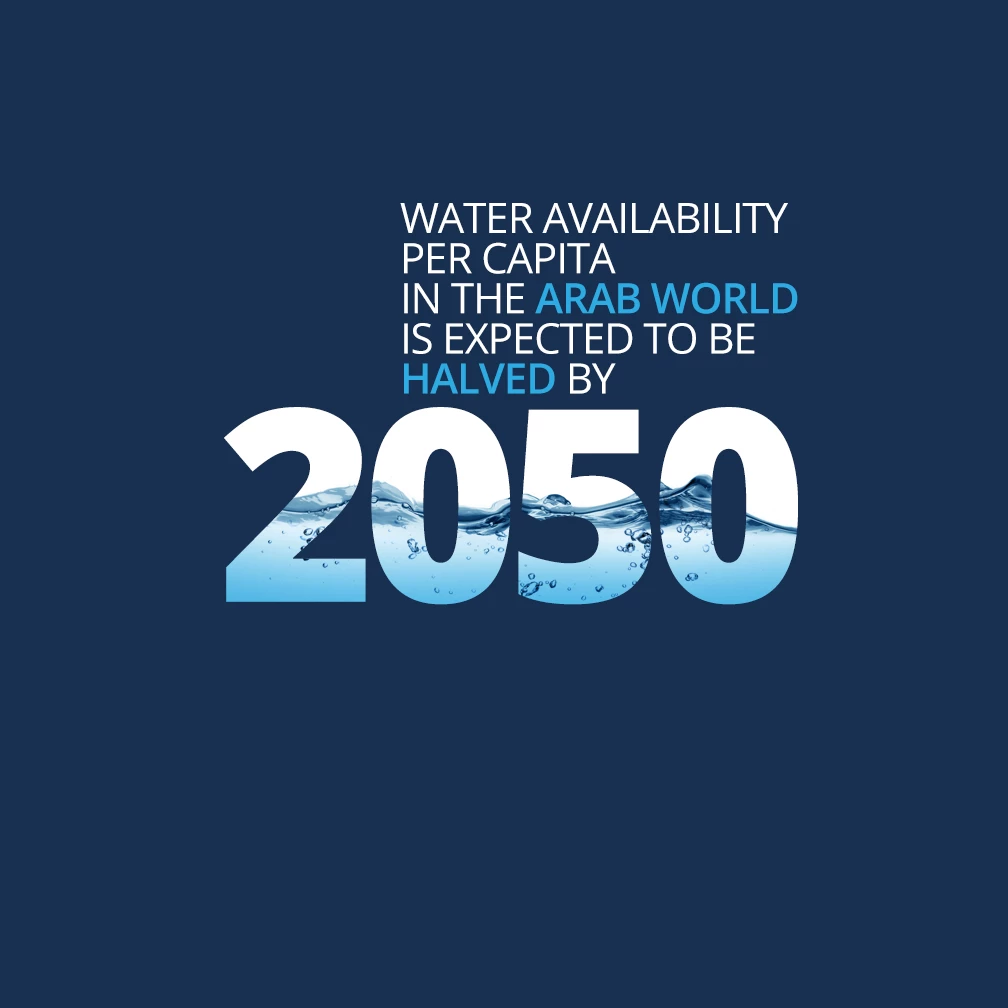 The Middle East and North Africa is home to 6% of the world’s population and less than 2% of the world’s renewable water supply. In fact, it is the world’s driest region with 12 of the world’s most water scarce countries: Algeria, Bahrain, Kuwait, Jordan, Libya, Oman, the Palestinian Territories, Qatar, Saudi Arabia, Tunisia, the United Arab Emirates, and Yemen.
The Middle East and North Africa is home to 6% of the world’s population and less than 2% of the world’s renewable water supply. In fact, it is the world’s driest region with 12 of the world’s most water scarce countries: Algeria, Bahrain, Kuwait, Jordan, Libya, Oman, the Palestinian Territories, Qatar, Saudi Arabia, Tunisia, the United Arab Emirates, and Yemen.
On average, water availability is only 1,200 cubic meters, around six times less than the worldwide average of 7,000 cubic meters.
Most MENA countries cannot sustainably meet their current water demand. With population growth and increased demand, water availability per capita is expected to be halved by 2050.
A seven year study ending in 2009, showed that the rate of freshwater reserve losses in the region was almost equal to the volume of the entire Dead Sea, making it the largest rate of loss of liquid freshwater on the planet during that time.
Yet some parts of the region (namely the more prosperous members of the Gulf Cooperation Council) have some of the highest per capita water consumption rates in the world. GCC countries also see biggest gaps between renewable supply and demand: Bahrain uses 220% of its available renewable water reserves, compared to 943% in Saudi Arabia and 2,465% in Kuwait.
Over the past 30 years, the water table in the UAE has dropped about one meter per year. At the current rate, the UAE is projected to deplete its natural freshwater resources in about 50 years.
To meet water demand, many countries in the Middle East rely on desalination plants. Over 75% of worldwide desalinated water is in the Middle East and North Africa, 70% of which is in the GCC countries (Saudi Arabia, Kuwait, Qatar, Bahrain and the United Arab Emirates) and 6% in Libya and Algeria.
In many MENA countries, 85% of water is consumed by the agriculture sector. More water-efficient agricultural practices will save water so it could be used to meet other demands. Good water-resource management depends on good agricultural irrigation policies.
For example, agricultural policies and irrigation methods used since the 1980s have been connected to the loss of two thirds of Saudi Arabia’s ground water supply.
 Climate change is expected to bring an expected 20% reduction in rainfall and higher rates of evaporation that will make water scarcer. In Syria for example, a predicted rise in temperature, lack of rainfall and unpredictable weather could result in desertification of 60 % of its land area.
Climate change is expected to bring an expected 20% reduction in rainfall and higher rates of evaporation that will make water scarcer. In Syria for example, a predicted rise in temperature, lack of rainfall and unpredictable weather could result in desertification of 60 % of its land area.
The region’s population growth coupled with projected climate change will make the water situation even more pressing.Countries in the Middle East and North Africa require environmentally friendly solutions on both the demand and supply side.
In the agriculture sector, climate smart agricultural practices and better irrigation methods will go a long way in conserving water in the region. The public must also be part of the conservation effort through awareness campaigns. A focus on water loss minimization and efficient energy usage at desalination plants, as Malta has shown, will further reduce the environmental cost of water production.


Join the Conversation